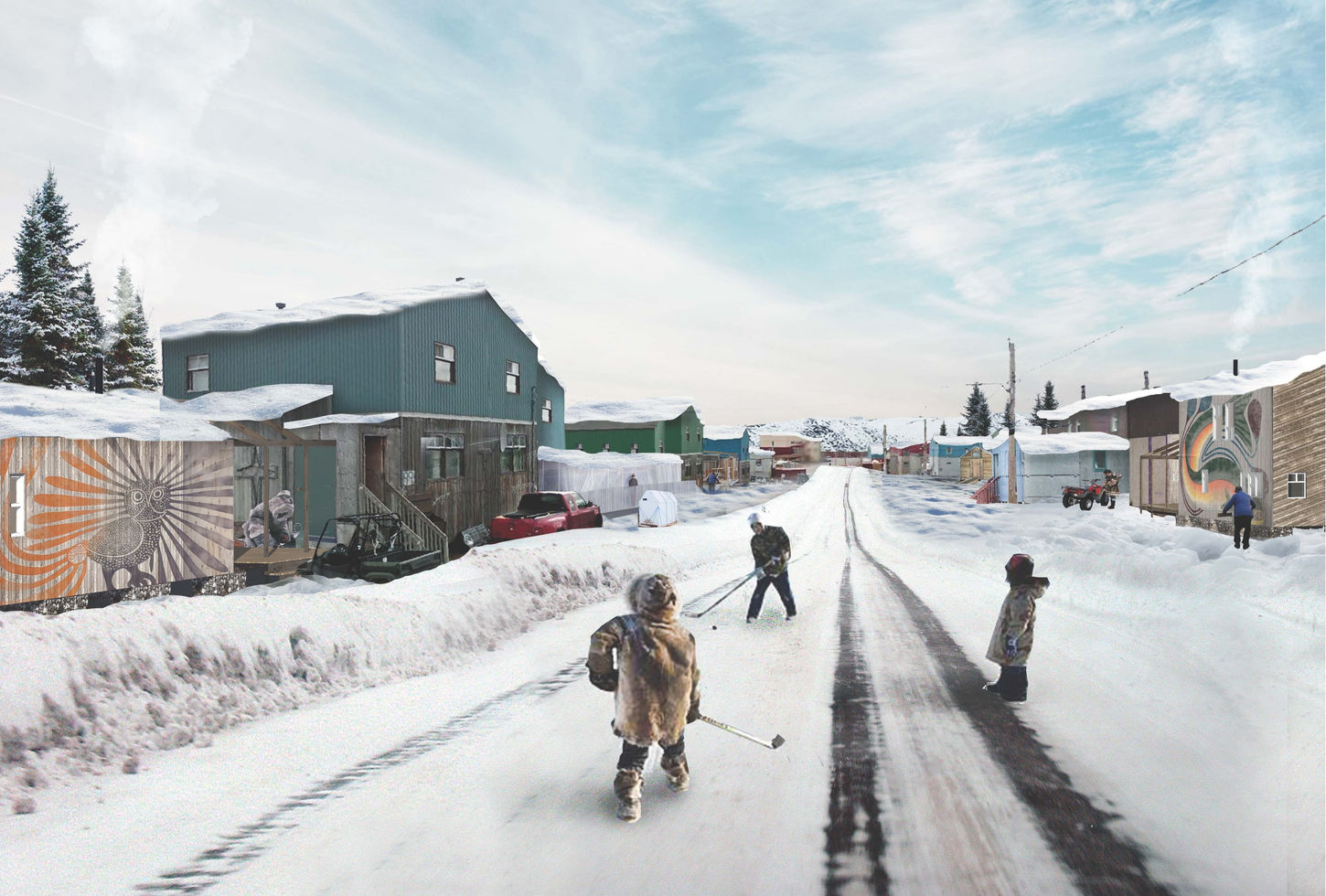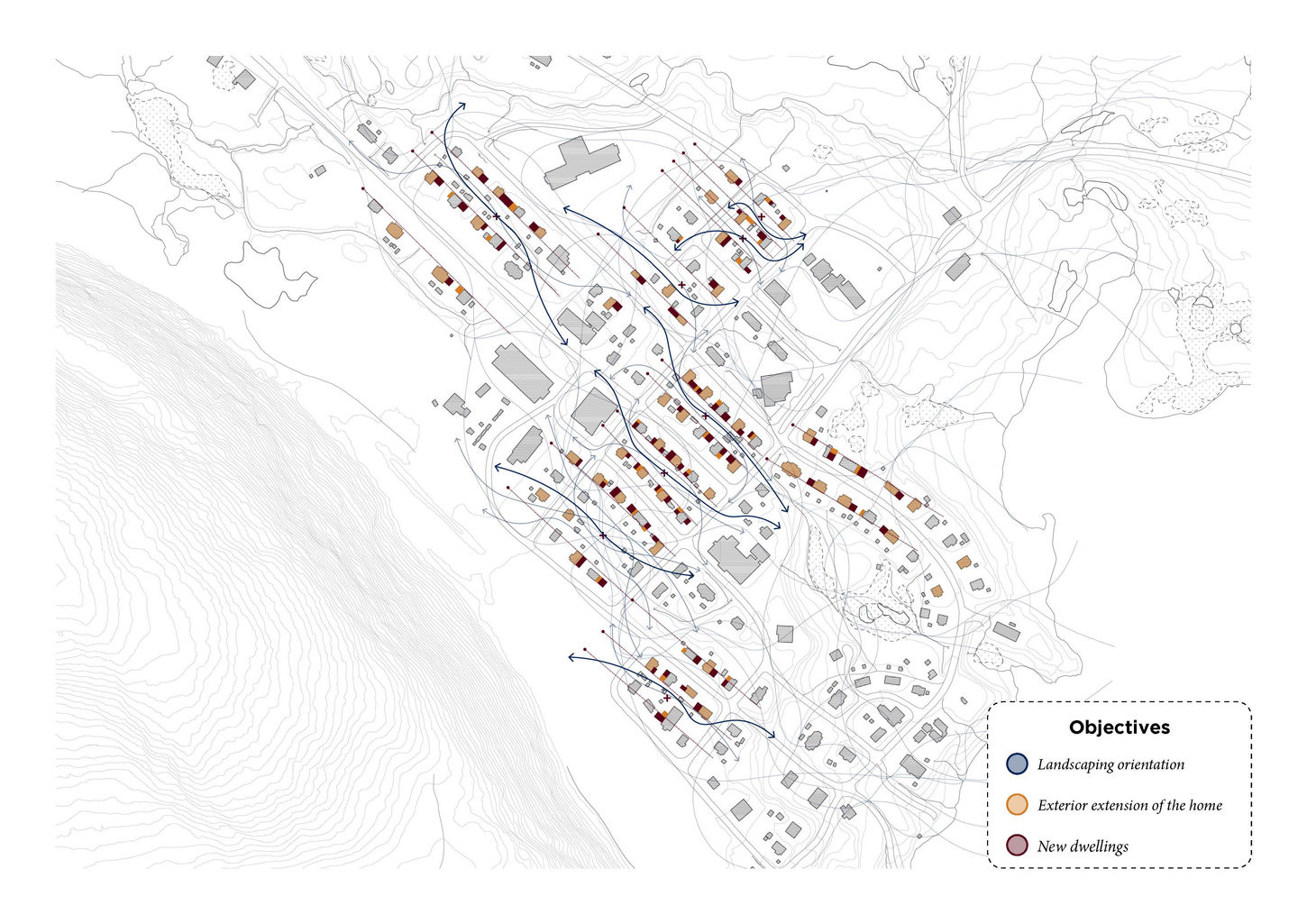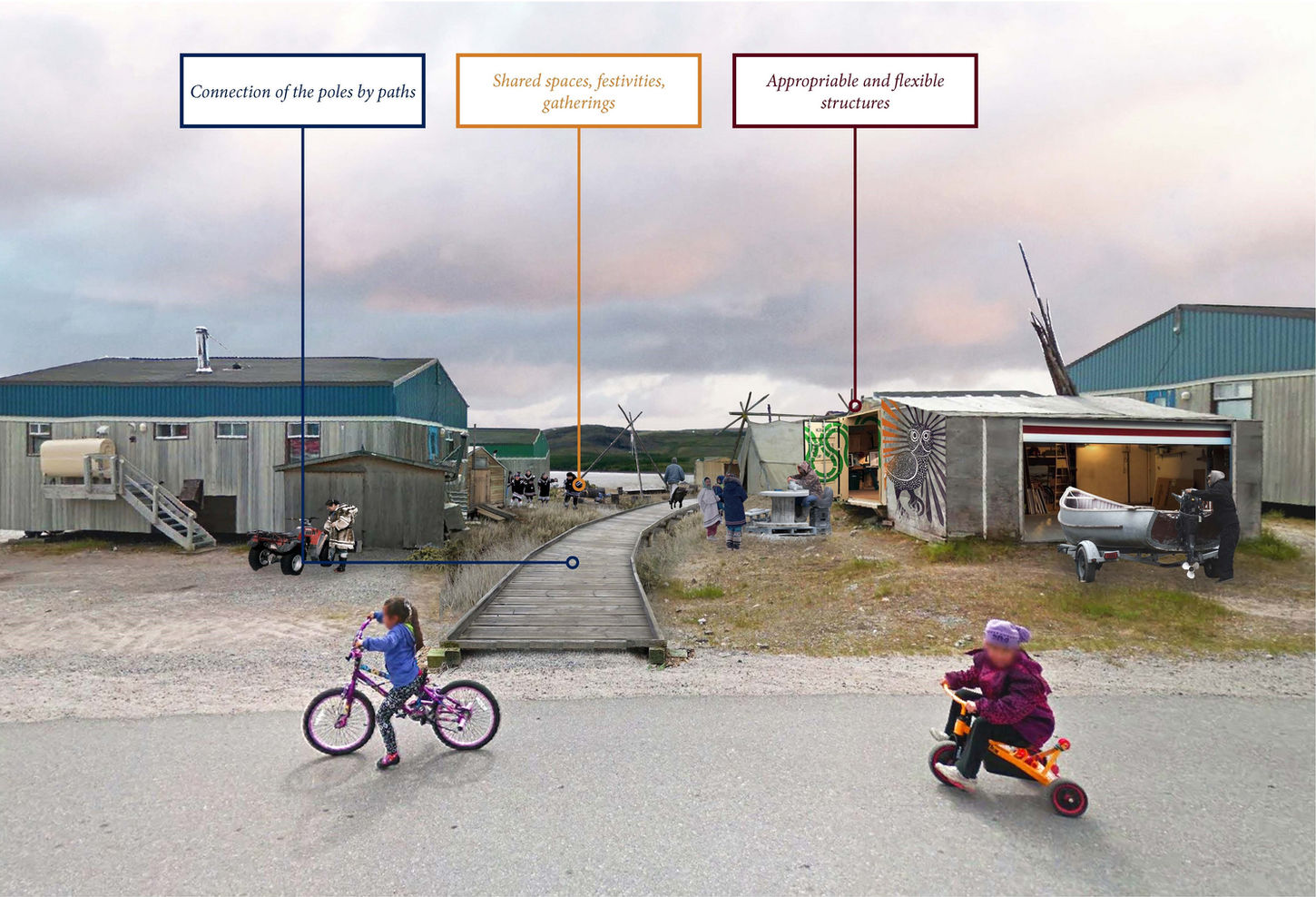

Olivia Ikey
Interview with UL (2023)
"We have all kinds of vehicles: snowmobiles, Hondas, trucks. It's not just about highways with pavements, but allowing the nature and the modern technology of pavement to live together."
Streets are vital elements of daily life in a Nunavik village, as they form a network that organizes travel, connects neighbourhoods, and gives access to homes and services. Most importantly, streets are places where people of all ages walk, greet one another, play, and should feel comfortable in, especially when using car or trucks alternatives like ATVs, bikes, and skidoos.
Whatever the street’s role may be, pedestrian security—particularly that of children—is paramount. Making streets work for all users thus requires thinking on two scales: that of a network, in terms of efficiency and mobility, and that of a public space, in terms of conviviality.
What We've Learned
Realities
Paths for Change
The network of streets is usually planned to accommodate vehicular traffic. But as user-friendly places for all ages, streets can also encourage playing or walking safely and comfortably to maintain an active lifestyle. While maintaining fluidity, grids and streets can be designed differently or should be rectified to increase the security of all users through traffic-calming strategies.
A permeable and well-connected street networkis without barriers or undue detours. Although loops and cul-de-sacs may foster a sense of security, they can discourage walking. Complementary pathways providing shortcuts in a more intuitive form can cater to various and slower modes of travel in all seasons. A lattice of such shortcuts and pathways already used by Nunavimmiut should be maintained, redefined, greened, and/or developed to complement the main network and to provide easy access within the community and to the land.
Such a well-connected and multi-scaled network encourages walking and supports spatial orientation for all users.
Calls to Action

15. Plan for a well-connected and scaled street network
Give streets a human scale by reducing the standard width, thereby discouraging speeding and using less granular material.
Encourage walking with compact grids, using short distances between intersections to foster a healthy lifestyle.
Favour grids (unifying) over linear configurations (sprawling) for more opportunities to walk and socialize.
Use loops only if well connected to other areas, to avoid isolation.

16. Make room for various modes of travel
Weave a “finer” network of pathways to complement vehicular streets and allow for multiple scales and speeds of mobility.
Provide well-defined green pathways between houses to offer safe areas to walk, meet people, play, and see or access the land.

17. Maintain visual connections
Ensure stimulating streetscapes with views of significant markers and beacons, including the land, to reinforce spatial orientation and maintain a sense of security.

18. Improve pedestrian safety
Prioritize pedestrian safety over vehicular fluidity—especially that of trucks.
Use street lighting and traffic-calming strategies (marked intersections, roadside bollards or rocks) to reinforce security.
This community design project for Kangiqsualujjuaq uses the existing built environment and a network of streets and pathways as a framework to highlight local cultural practices and identity.
A lattice of bike and pedestrian pathways complements the vehicular streets to improve overall safety. New housing types and additions to existing houses express local know-how through self-building. They also offer new outdoor spaces—shared “in-between” platforms, workshops, open backyards—to do cultural activities, and share knowledge and know-how.
The extended thresholds of community buildings encourage effervescence and participation and welcome temporary shops or food trucks according to the seasons and needs. They animate streets and promote safe walking and biking.
These new flexible yet modest meeting places are linked with one another by a human-scaled network of streets and pathways to form a well-connected living environment.
By P. Champagne, R. Gaboury-Salvail, M. Niget, École d’architecture de l’Université Laval, 2020
Community Space to Support Imagination and Daily Life
Innovations: Thinking Outside the Box
Outside the Box Innovations
References
Open Access
Allard, M, Deslauriers, C and Gauthier, S (2020) Planning Northern Villages expansion: Nunavik. Centre d’études Nordiques-CEN, Université Laval, Québec. https://storymaps.arcgis.com/stories/972ec51ef8134e9eafe6db4c35551169
Allard, M, Lemay, M, and ArcticNet (2012) Nunavik and Nunatsiavut : from science to policy : an integrated regional impact study (iris) of climate change and modernization.Université Laval, ArcticNet. https://arcticnet.ulaval.ca/wp-content/uploads/2022/06/Nunavik-and-Nunatsiavut-regional-climate-information-update_pdfversionFINAL_compress-min.pdf
Kunuk, Z, and Mauro, I (2010) Inuit Knowledge and Climate Change. Video documentary. https://youtu.be/ATMJmIfbXRo?si=HMathfAuEouFfm0O.
Messier, L (2022) Le nord et ses rives : l’adaptation des villages côtiers nordiques à l’érosion et aux changements du niveau des eaux. Essai en design urbain, Université Laval. https://www.bibl.ulaval.ca/doelec/TravauxEtudiants/1345548421.pdf
Rochette, M (2019) La transformation des territoires nordiques urbanisés : Étude de la forme et des traits distinctifs des villages Inuit du Nunavik, Études Inuit Studies, 44 (1-2), pp. 269-300. https://doi.org/10.7202/1081806ar
Rochette, M (2020) Territoires nordiques urbanisés en transformation. Analyse typomorphologique des villages Inuit du Nunavik. Essai en design urbain, Université Laval, Québec.
Tessier, G (2022) Forme urbaine et transition énergétique au Nunavik : vers des principes d'aménagement microclimatique pour les communautés inuit. Essai en design urbain, Université Laval. https://www.bibl.ulaval.ca/doelec/TravauxEtudiants/1346095911.pdf
Trottier, F (2022) Résilience, urbanité et Relationalité : Qualités urbaines et principes d’aménagement fondés sur une approche de planification autochtone durable et inclusive. Essai en design urbain, Université Laval.
Other
Bentley, I, Alcock, A, Murrain, P, McGlynn, Smith, P (1985) Permeability (chapter 2). In Responsive Environments: A manual for designers. New York: Routledge (pp. 12-26). https://www.routledge.com/Responsive-Environments/Bentley-McGlynn-Smith-Alcock-Murrain/p/book/9780750605663
Watt-Cloutier, S. (2015) The right to be cold: One woman's story of protecting her culture, the Arctic and the whole planet. Allen Lane. https://ulaval.on.worldcat.org/oclc/936689630






















